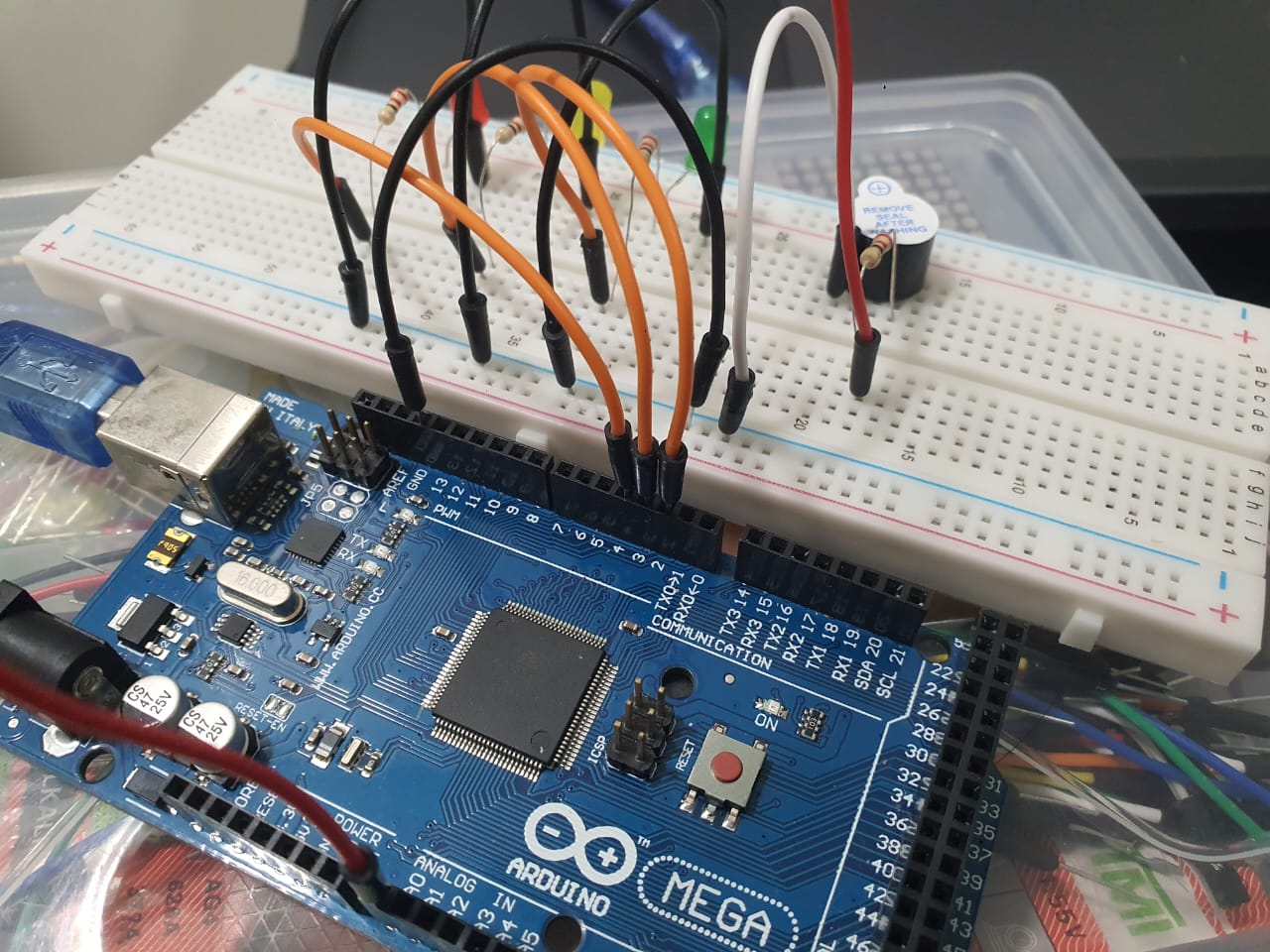Playing “Happy Birthday” Melody using Active Buzzer Tone Piezo is a fun and educational project for beginners and hobbyists alike. One of the most iconic melodies to play is the “Happy Birthday” song, which is recognized worldwide and brings joy to celebrations.
In this tutorial, we’ll guide you through the process of programming your Arduino to play the “Happy Birthday” melody using an Active Buzzer Tone Piezo connected to it. We’ll break down the melody into its constituent notes, assign frequencies to each note, and program the Arduino to play them in sequence.
Wiring
Connect the active buzzer to the Arduino:
- Buzzer Positive Pin (+): Connect to a digital output pin on the Arduino (e.g., pin A0).
- Buzzer Negative Pin (-): Connect to the GND (ground) pin on the Arduino.
Code
Here is the Arduino code to play the “Happy Birthday” melody:
#define NOTE_B0 31
#define NOTE_C1 33
#define NOTE_CS1 35
#define NOTE_D1 37
#define NOTE_DS1 39
#define NOTE_E1 41
#define NOTE_F1 44
#define NOTE_FS1 46
#define NOTE_G1 49
#define NOTE_GS1 52
#define NOTE_A1 55
#define NOTE_AS1 58
#define NOTE_B1 62
#define NOTE_C2 65
#define NOTE_CS2 69
#define NOTE_D2 73
#define NOTE_DS2 78
#define NOTE_E2 82
#define NOTE_F2 87
#define NOTE_FS2 93
#define NOTE_G2 98
#define NOTE_GS2 104
#define NOTE_A2 110
#define NOTE_AS2 117
#define NOTE_B2 123
#define NOTE_C3 131
#define NOTE_CS3 139
#define NOTE_D3 147
#define NOTE_DS3 156
#define NOTE_E3 165
#define NOTE_F3 175
#define NOTE_FS3 185
#define NOTE_G3 196
#define NOTE_GS3 208
#define NOTE_A3 220
#define NOTE_AS3 233
#define NOTE_B3 247
#define NOTE_C4 262
#define NOTE_CS4 277
#define NOTE_D4 294
#define NOTE_DS4 311
#define NOTE_E4 330
#define NOTE_F4 349
#define NOTE_FS4 370
#define NOTE_G4 392
#define NOTE_GS4 415
#define NOTE_A4 440
#define NOTE_AS4 466
#define NOTE_B4 494
#define NOTE_C5 523
#define NOTE_CS5 554
#define NOTE_D5 587
#define NOTE_DS5 622
#define NOTE_E5 659
#define NOTE_F5 698
#define NOTE_FS5 740
#define NOTE_G5 784
#define NOTE_GS5 831
#define NOTE_A5 880
#define NOTE_AS5 932
#define NOTE_B5 988
#define NOTE_C6 1047
#define NOTE_CS6 1109
#define NOTE_D6 1175
#define NOTE_DS6 1245
#define NOTE_E6 1319
#define NOTE_F6 1397
#define NOTE_FS6 1480
#define NOTE_G6 1568
#define NOTE_GS6 1661
#define NOTE_A6 1760
#define NOTE_AS6 1865
#define NOTE_B6 1976
#define NOTE_C7 2093
#define NOTE_CS7 2217
#define NOTE_D7 2349
#define NOTE_DS7 2489
#define NOTE_E7 2637
#define NOTE_F7 2794
#define NOTE_FS7 2960
#define NOTE_G7 3136
#define NOTE_GS7 3322
#define NOTE_A7 3520
#define NOTE_AS7 3729
#define NOTE_B7 3951
#define NOTE_C8 4186
#define NOTE_CS8 4435
#define NOTE_D8 4699
#define NOTE_DS8 4978
#include <Arduino.h>
const int buzzerPin = A0;
// Notes for "Happy Birthday"
int melody[] = {
NOTE_G4, NOTE_G4, NOTE_A4, NOTE_G4, NOTE_C5, NOTE_B4,
NOTE_G4, NOTE_G4, NOTE_A4, NOTE_G4, NOTE_D5, NOTE_C5,
NOTE_G4, NOTE_G4, NOTE_G5, NOTE_E5, NOTE_C5, NOTE_B4, NOTE_A4,
NOTE_F5, NOTE_F5, NOTE_E5, NOTE_C5, NOTE_D5, NOTE_C5
};
// Note durations: 4 = quarter note, 8 = eighth note, etc.
int noteDurations[] = {
4, 4, 4, 4, 4, 2,
4, 4, 4, 4, 4, 2,
4, 4, 4, 4, 4, 4, 2,
4, 4, 4, 4, 4, 2
};
void setup() {
// No setup needed for this example
}
void loop() {
// Play each note in the melody
for (int thisNote = 0; thisNote < 25; thisNote++) {
int noteDuration = 1000 / noteDurations[thisNote];
tone(buzzerPin, melody[thisNote], noteDuration);
int pauseBetweenNotes = noteDuration * 1.30;
delay(pauseBetweenNotes);
noTone(buzzerPin);
}
// Wait for a while before playing the melody again
delay(2000);
}Explanation
A. Define Notes:
- The
NOTE_*constants represent the frequencies of musical notes. These are used to generate the correct pitches for the melody.
B. Melody and Durations:
melody[]array contains the notes for “Happy Birthday”.noteDurations[]array specifies the duration of each note. For example,4represents a quarter note.
C. Setup Function:
- No specific setup is required in this case.
D. Loop Function:
- Iterates over the notes in the
melody[]array. - Uses
tone(buzzerPin, frequency, duration)to play each note. delay(pauseBetweenNotes)ensures a short pause between notes.noTone(buzzerPin)stops the sound between notes.
E. Repeat Melody:
- After playing the melody, the loop waits for 2 seconds before repeating.
Playing melodies with an Arduino and an active buzzer is a fantastic way to explore the intersection of electronics and music. With this tutorial, you’ve learned how to program your Arduino to play the iconic “Happy Birthday” melody, opening up endless possibilities for musical experimentation and creativity.
Now, gather your friends and family, celebrate special occasions, and let the Arduino play the tunes of joy!
Expertise on Engineering.
Robotic and microcontroller are like toys to me.
I love playing with them.
